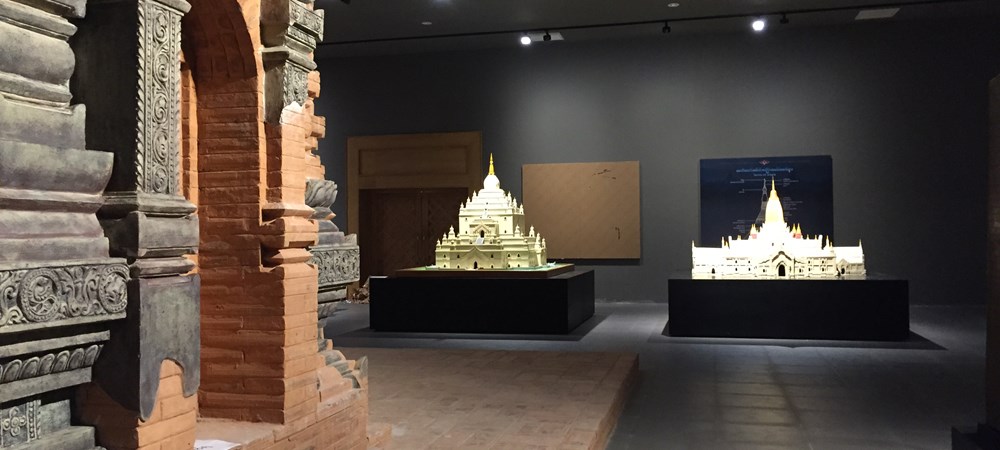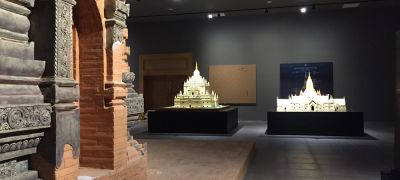

Delve into Myanmar's history with a visit to the National Museum in Naypyidaw, which houses an impressive collection of ancient artifacts. Guests can witness millennia of Burmese culture through the extensive exhibitions that showcase rare and meaningful items, including ornate royal regalia, traditional musical instruments, and historical Buddhist statues. The museum's collection offers a unique window into the soul of Myanmar, ensuring that visitors gain a deeper understanding of the nation's diverse and intricate past. As you wander through the galleries, you will be transported back in time, and the vivid descriptions accompanying each exhibit will leave you with a lasting appreciation for the country's rich heritage.
The Royal Throne Room Exhibition is a must-see attraction within the National Museum. Here, visitors can marvel at the intricate details of the Lion Throne, known as the ‘Sihasana’. This grand throne is a symbol of Burmese sovereignty and was once used by the ancient kings of Myanmar. The exhibit not only features the throne itself but also contains elaborate court items and regalia used in royal ceremonies. Informative displays explain the significance and rituals associated with the monarchy, providing a fascinating glimpse into a bygone era of grandeur and ceremony. Guests will leave with a profound appreciation of the country's former royal traditions and the craftsmanship that went into creating such opulent pieces.
The Cultural Heritage Walk within the National Museum offers a journey through Myanmar's vibrant traditions and practices. This walk takes visitors on a tour of various exhibits that highlight the everyday lives, customs, and festivities of the Burmese people. Notable displays include traditional attire from different ethnic groups, agricultural tools, and handicrafts. This activity is an excellent opportunity for those interested in anthropology and sociology, as it provides insights into how Burmese culture has been shaped over centuries. The Cultural Heritage Walk is designed to be interactive and educational, making it a suitable experience for people of all ages who are keen to explore Myanmar's diverse cultural tapestry.
The National Museum in Naypyidaw features a compelling Contemporary Burmese Art Gallery that is dedicated to showcasing modern and contemporary art from Myanmar's burgeoning art scene. This dynamic space offers a platform for local artists to display their work, which ranges from paintings and sculptures to mixed media and installations. By visiting this gallery, guests get to experience the country's evolving artistic expressions and the thought-provoking themes currently being explored by contemporary Myanmar artists. This gallery is an encapsulation of the current cultural pulse, reflecting the complex social, political, and economic narratives that are shaping today's Myanmar.
The National Museum's collection of ancient manuscripts and epigraphy is an invaluable resource for history buffs and academics alike. The exhibition displays an array of traditional palm-leaf manuscripts, parabaiks (folded paper manuscripts), and stone inscriptions, providing fascinating insights into the literary and intellectual history of Burma. These ancient texts cover a range of subjects from religious scriptures and royal edicts to astrological charts and legal documents. Moreover, some of the museum's most prized epigraphs are on display, allowing visitors to see the evolution of Burmese script and the meticulous craft of stone inscription. The museum's informative descriptions make the content accessible even to those unfamiliar with the historical context, ensuring a rewarding experience for all.
Money enthusiasts and historians alike will appreciate the Numismatics Exhibit at the National Museum in Naypyidaw. This exhibit chronicles the history of currency in Myanmar, from ancient cowrie shells to modern banknotes and coins. It provides an overview of economic exchanges in the region, showcasing the variety of mediums used for trade and the intricate designs that reflect the country's heritage. The collection includes rare and unusual currencies, offering a unique perspective on how monetary systems have influenced and reflected societal changes over time. This exhibit is not just about money; it is about the tale of commerce, economy, and social evolution in Myanmar.
A Guided Historical Tour of the National Museum is an enriching experience, especially for those who wish to comprehend the depth of Burmese history with expert explanations. The tour is led by knowledgeable guides who can speak to the cultural significance and historical context of the artifacts on display. Visitors will learn about the nation's dynasties, the impact of colonialism, and the road to independence. The guides' anecdotes and storytelling bring the historical narratives to life and provide an engaging platform to ask questions and spark discussions. This personalized tour is invaluable for anyone looking to gain a deeper understanding of Myanmar's complex past.
For a hands-on cultural experience, the Folk Art Workshops at the National Museum provide a fantastic way to engage with Burmese art traditions. Visitors can participate in workshops on puppetry, lacquerware, weaving, or other indigenous crafts led by local artisans. These workshops aim to preserve and promote Myanmar's rich folk art heritage, offering participants not just a souvenir, but also skills they can appreciate and understand. No previous experience is necessary, as the workshops are designed to cater to all skill levels, and they offer a rare opportunity to engage directly with the culture in a way that is both educational and enjoyable.
The Burmese Architecture Exhibit is an exploration of Myanmar’s architectural legacy, from the ancient stupas and pagodas to colonial-era buildings and contemporary designs. Visitors will find detailed models, photographs, and drawings that illustrate the distinctive features of Burmese architecture, such as multitiered roofs and ornate carvings. Interpretive panels explain the religious, cultural, and practical considerations that have shaped local architectural styles over the centuries. This exhibit is a testament to Myanmar's design innovation and a tribute to the country's built environment.
Visitors interested in the period before British influence will be captivated by the Pre-Colonial Burma Exhibit. The exhibit offers an in-depth look at the structure of early Burmese societies, highlighting the might of kingdoms such as Bagan, Ava, and the Shan States. Artifacts, maps, and timelines form the core of this exhibition, revealing the complexities of political power, societal organization, and cultural development prior to colonial rule. This informative section of the museum offers a window into the achievements and traditions of pre-colonial Burma, providing a foundational understanding for anyone looking to grasp the entirety of Myanmar's history.
